 | "High Power Rocket Ejection Charge Preparation" (2011-06-27)      High power rocketry will typically involve putting electronic components into the rocket to control when the parachutes are deployed. This video shows how to mount the electronics in a electronics-bay, which is typically shortened to e-bay. This YouTube video is just a short snipet of the 2-hour long video that shows how to mount the electronic board to the sled in the ebay. This snipet shows the final prep step prior to flight, which is putting in the ejection charges that kick out the parachutes.
|
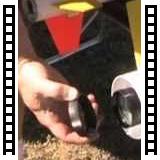 | "Using A Motor Adapter for High-Power Model Rockets" (2011-06-03)      This video shows how easy it is to use the metal motor-mount adapters. The purpose of the adapter is to allow you to use skinnier motors in a rocket kit that has a motor mount that uses larger diameter rocket engines. You can literally swap out sizes in just a few seconds.
|
 | 2 Model Rocket Contest Strategies - Random Duration (2011-07-04)      Model Rocket Contest strategies for the Random Duration event.
|
 | 5 Model Rocket Contest Strategies - Helicopter Duration (2011-07-04)      Model rocket contest flying tips for the 1/2A Helicopter Duration event
|
 | 5th Grade Classroom Rocketry Presentation - Part 1 (2011-06-24)      Looking for some ideas on how to incorporate rocketry into your school classroom? This video will give you some ideas on how to tie rocketry to the subject matter you're already teaching in your class. Your students will have a greater appreciation for the importance of what you are already teaching them.
|
 | 5th Grade Classroom Rocketry Presentation - Part 2 (2011-06-24)      Looking for some ideas on how to incorporate rocketry into your school classroom? This video will give you some ideas on how to tie rocketry to the subject matter you're already teaching in your class. Your students will have a greater appreciation for the importance of what you are already teaching them.
|
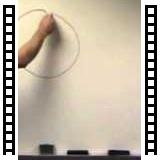 | 5th Grade Classroom Rocketry Presentation - Part 3 (2011-06-24)      Looking for some ideas on how to incorporate rocketry into your school classroom? This video will give you some ideas on how to tie rocketry to the subject matter you're already teaching in your class. Your students will have a greater appreciation for the importance of what you are already teaching them.
|
 | 6 Model Rocket Contest Strategies - Flexie Glider (2011-06-22)      Model rocket contest flying strategies for the 1/4A flexie boost-glider event.
|
 | Add A Parachute Attachment Point To A Fiberglass Nose Cone (2011-06-24)      A quick parachute attachment loop can be added to your model rocket nose cone by using a little glob of epoxy clay and a piece of high-strength shock cord. You can also use a metal screw eye, or an eyebolt using this same technique.
|
 | Add Paper Skins To Balsa Wood Fins To Make A Stronger Model Rocket (2011-06-26)      Adding a paper lamination to the surfaces of your rocket's balsa wood fins greatly increases the strength of the fin without adding hardly any weight. It also seals the surface and makes the rocket easier to prepare to its final coat of paint. It takes a little practice, but the results are worth the effort.
|
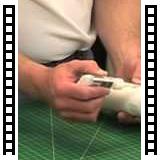 | Add Surface Texture To Your Model Rockets (2011-06-26)      One easy way to make your model rocket stand out on the launch pad, in a crowd of other rockets, is to add some surface texture to it. In this video, you'll see a couple of quick and inexpensive tips that you can use that will give your rocket the appearance of a real NASA rocket.
|
 | Aerotech Delay Drilling Tool (2011-06-26)      Using the Aerotech RMS Delay Drilling Tool to shorten the ejection charge delay of reloadable rocket engines.
|
 | AltimeterOne (2011-06-24)      The AltimeterOne altimeter has undergone a significant upgrade modification to make it even better. It now displays either English or Metric units, plus it has a low-battery icon that shows when it is time to recharge the unit. In addition, it also has a special mode that allows you to see the current altitude in real-time. This mode is great for educators, as it will show the students how the pressure changes with altitude. In other words, you can watch the altitude change as you ride up in an elevator! Or you can turn it on and see how high you've hiked up a hill. This video goes through the new features of the latest version of the AltimeterOne so you can see it in action.
|
 | AltimeterOne Altimeter for Model Rockets, Air Planes, and Kites (2011-06-26)      The AltimeterOne is a small barometric altimeter that will tell you how high your rocket, airplane, or kit has flown (works on water rockets too!). This video tells you how to turn it on, zero it out, and hook it up to your flying machine. When you get it back, it tells you exactly how high it went.
|
 | AltimeterTwo (2011-06-22)      |
 | AltimeterTwo Altimeter Actual Flight in a model rocket (2011-05-29)      www.apogeerockets.com This video shows how to use the altimeterTwo altimeter in a model rocket. Just turn it on, zero it out, drop it into the rocket, and launch! By the time you walk over to the rocket, it is already displaying the peak altitude and the top speed of the rocket. It also records eight other flight parameters, like thrust duration, descent speed, and total flight time from lift-off until landing. To learn more about this device, visit the ApogeeRockets.com web site. That burning wad is a bit of recovery wadding smoldering. By the time it hit the ground, it had already snuffed itself out.
|
 | Applying Pressure Sensitive Decals to Model Rockets (2014-01-18)      http://www.ApogeeRockets.com This video shows how to apply pressure-sensitive decals (the sticker type) to your model rocket. Sometimes they need to be moved...
|
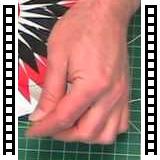 | Attaching Strings To Model Rocket Parachutes (2011-06-26)      Young children have a hard time attaching strings to plastic parachutes on model rockets. If you're working with boy scouts or school children, you'll see my method of tying the strings to the chute canopy. The kids will have an easier time, and the rocket will come down straighter and slower.
|
 | Build a Rogallo Wing, Rocket boosted glider part 1 (2011-06-22)      Part 1 of 7. This video shows the construction sequence for making a Rogallo wing glider that is boosted into the sky by a model rocket. They are often called flexie gliders because the wing is flexible and can be rolled up and stored in a small space. In model rocketry, they are used in the National Association of Rocketry's flexie contest.
|
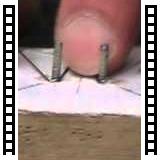 | Build a Rogallo Wing, Rocket boosted glider part 2 (2011-06-19)      Part 2 of 7. This video shows the construction sequence for making a Rogallo wing glider that is boosted into the sky by a model rocket. They are often called flexie gliders because the wing is flexible and can be rolled up and stored in a small space. In model rocketry, they are used in the National Association of Rocketry's flexie contest.
|
 | Build a Rogallo Wing, Rocket boosted glider part 3 (2011-05-31)      Part 3 of 7. This video shows the construction sequence for making a Rogallo wing glider that is boosted into the sky by a model rocket. They are often called flexie gliders because the wing is flexible and can be rolled up and stored in a small space. In model rocketry, they are used in the National Association of Rocketry's flexie contest.
|
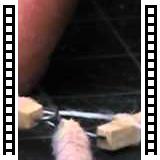 | Build a Rogallo Wing, Rocket boosted glider part 4 (2011-06-22)      Part 4 of 7. This video shows the construction sequence for making a Rogallo wing glider that is boosted into the sky by a model rocket. They are often called flexie gliders because the wing is flexible and can be rolled up and stored in a small space. In model rocketry, they are used in the National Association of Rocketry's flexie contest.
|
 | Build a Rogallo Wing, Rocket boosted glider part 5 (2011-05-31)      Part 5 of 7. This video shows the construction sequence for making a Rogallo wing glider that is boosted into the sky by a model rocket. They are often called flexie gliders because the wing is flexible and can be rolled up and stored in a small space. In model rocketry, they are used in the National Association of Rocketry's flexie contest.
|
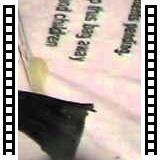 | Build a Rogallo Wing, Rocket boosted glider part 6 (2011-05-31)      Part 6 of 7. This video shows the construction sequence for making a Rogallo wing glider that is boosted into the sky by a model rocket. They are often called flexie gliders because the wing is flexible and can be rolled up and stored in a small space. In model rocketry, they are used in the National Association of Rocketry's flexie contest.
|
 | Build a Rogallo Wing, Rocket boosted glider part 7 (2011-06-22)      "www.ApogeeRockets.com" Part 7 of 7. This video shows the construction sequence for making a Rogallo wing glider that is boosted into the sky by a model rocket. They are often called flexie gliders because the wing is flexible and can be rolled up and stored in a small space. In model rocketry, they are used in the National Association of Rocketry's flexie contest.
|
 | Building a Canted Engine Mount for model rockets (2011-06-24)      Part 2 of 2. With canted engine mounts, the tubes holding the motors can interfere with each other. This video shows how to cut the tubes and glue them together to get around that interference.
|
 | Building Your First High Power Rocket - Part 1 (2011-06-22)      Putting together a high power rocket is actually easier than you might imagine. In this first video, you'll see how to assemble the engine mount, which is the heart of the high-power rocket. We're trying something different in this series of videos. I'm personally going to move from being in front of the camera, to being behind it. The construction of the rocket is being done by Erin Card, who works here at Apogee Components as web designer and customer service representative. She really wanted to build a big rocket, so I said, "sure. But let's record it too, as I'm sure other people would love to see the process." So in this video, I'll give you a short introduction for Erin, and then she will proceed to assemble the rocket.
|
 | Building Your First High Power Rocket - Part 2 (2011-05-29)      www.ApogeeRockets.com - Putting together a high power rocket is actually easier than you might imagine. In this second video, you'll see how to tie on the shock cord to the engine mount, and then to glue the engine mount into the body tube.. We're trying something different in this series of videos. I'm personally going to move from being in front of the camera, to being behind it. The construction of the rocket is being done by Erin Card, who works here at Apogee Components as web designer and customer service representative. Since we're video recording the process of making this kit, we're taking a bit longer than normal. But that's cool. Every time you get to see Erin, she's wearing something different.
|
 | Building Your First High Power Rocket - Part 3 (2011-06-03)      www.ApogeeRockets.com Putting together a high power rocket is actually easier than you might imagine. In this third video, you'll see how to sand your fins and glue them in place. We're not done with the fins yet, though! We're trying something different in this series of videos. I'm personally going to move from being in front of the camera, to being behind it. The construction of the rocket is being done by Erin Card, who works here at Apogee Components as web designer and customer service representative. Since we're video recording the process of making this kit, we're taking a bit longer than normal. But that's cool. Every time you get to see Erin, she's wearing something different.
|
 | Building Your First High Power Rocket - Part 4 (2011-07-13)      Putting together a high power rocket is actually easier than you might imagine. In this fourth video, you'll see how install rail buttons and the Aeropack engine retainer. We're trying something different in this series of videos. I'm personally going to move from being in front of the camera, to being behind it. The construction of the rocket is being done by Erin Card, who works here at Apogee Components as web designer and customer service representative. Since we're video recording the process of making this kit, we're taking a bit longer than normal. But that's cool. Every time you get to see Erin, she's wearing something different.
|
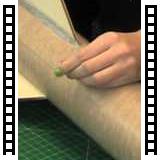 | Building Your First High Power Rocket - Part 5 (2011-06-22)      Ever wanted to see how to make near-perfect fin fillets? In this week's video tutorial, Erin is going to add the epoxy fillets along the fins to enhance the strength of the fins. They will also reduce the drag along the corner of the fin where it meets the tube, so the rocket will fly higher too. The video starts with securing the rail button down with epoxy clay to prevent the parachute from snagging on the bolt that protrudes through the tube. Then you'll see the steps to creating fillets so smooth, that people will be begging you to tell them your secret. And it is easier than you'd think. See how it is done now!
|
 | Building Your First High Power Rocket - Part 6, Building & Installing Your Altimeter Bay, Step 1 (2011-07-31)      The high-power rocket that Erin has been assembling in this series is intended as an easy-to-build dual deployment rocket. That means it is going to carry electronics to fire off two separate ejection charges. In this week's video, we'll start assembling the electronics bay (called the e-bay or an altimeter bay). The e-bay is the standard 4-inch Mad-Cow ebay (www.ApogeeRockets.com so this video can also help you if you are interested in that product as well. What you'll see is gluing the bulkheads in place, assembling the sled that hold the electronics, and putting the external ring on the coupler that houses everything.
|
 | Building Your First High Power Rocket - Part 9, Sanding the Primer Coats (2011-08-19)      The next step is the most tedious in finishing your rocket, but a vital one. Sanding the primer and getting a smooth, bump-free finish is of utmost importance when a smooth, glossy topcoat is desired. The paint-sand-paint-repeat technique can be used for any rocket, low to high power.
|
 | Building Your First High Powered Rocket - Part 7 (2011-07-13)      www.ApogeeRockets.com The high-Power rocket that Erin has been assembling in this series, is intended as an easy-to-build dual deployment rocket. That means it is going to carry electronics to fire off two separate ejection charges. In this week's video, we'll finish assembling the electronic's bay (called the e-bay or an altimeter bay) and install the rivets. At the end of this video, we have a nearly-functional rocket! The e-bay is the standard 4-inch Mad-Cow altimeter bay, so this video can also help you if you are interested in that product as well.
|
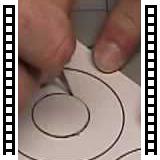 | Cut Centering rings for your model rockets (2011-06-03)      From DVD "Building Skill Level 2 Model Rocket Kits" from Apogee Components (www.ApogeeRockets.com). This video shows you how to cut out your own centering rings to use in your own rocket designs. You'll save money, and have great satisfaction knowing that you built the rockets yourself.
|
 | Designing a Canted, Clustered Rocket Engine Mount (2011-06-26)      Designing a clustered rocket is more than slapping two or more motors into the engine mount. If you cant them at the right angle, you insure a straight flight, even if one motor fails to ignite. This is part one of two.
|
 | Dual Deployment for High Power Model Rockets - Part 1 (2011-06-03)      What is dual deployment? Why would you use it? What kind of equipment do you need? These are the kind of questions we'll answer in this first video on using the Entacore AIM-USB altimeter in your next high power project
|
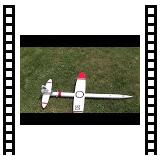 | Dual Deployment for High Power Model Rockets Part 2 (2011-06-17)      Dual Deployment allows you to retrieve your rocket closer to the launch pad by ejecting two different size parachutes from the rocket. This is done with a special altimeter. How do you mount the altimeter into the model rocket? How do you connect the ejection charges to the electronics? These are questions that are answered in this video. This is a continuation from Part 1 at: www.youtube.com/watch?v=KFbQ17y98hU . Part 3 of this series is located at: www.apogeerockets.com/Rocketry_Videos/Rocketry_Video_28.asp
|
 | Dual Deployment for High Power Model Rockets Part 3 (2011-06-24)      In part three of this series, you'll see how to hook-up your igniters for your altimeter, and see a test of two dual deployment devices.
|
 | Dual Deployment for Model Rockets - Part 4 of 5 (2011-06-24)      Dual deployment in model rocketry is where you eject two parachutes out of the rocket. A small one at apogee (the peak of the trajectory) so that the rocket comes down quickly. But to keep it from touching down too fast, you pop out a big chute when the rocket is close to the ground. The use of two chutes using this method prevents the rocket from drifting too far. In this video (Part 4 of 5), we'll talk about how to use your computer to set the altitudes that the parachutes will be deployed.
|
 | Dual Deployment for Model Rockets - Part 5 of 5 (2011-05-29)      Dual deployment in model rocketry is where you eject two parachutes out of the rocket. A small one at apogee (the peak of the trajectory) so that the rocket comes down quickly. But to keep it from touching down too fast, you pop out a big chute when the rocket is close to the ground. The use of two chutes using this method prevents the rocket from drifting too far. In this video (Part 5 of 5), we'll talk about how to use your computer to set the altitudes that the parachutes will be deployed.
|
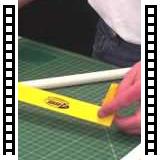 | Estes Tube & Fin Marking Guide (2011-12-13)      Having some tools to mark your body tubes will make designing and building your own rockets go a lot faster. The standard tools that every designer should have are the Estes Tube Marking Guides. While they've been around for quite some time, they are still pretty effective. In this video, you'll see a number of ways to use them to build your own rockets.
|
 | Fill Model Rocket Body Tube Spirals (2011-09-20)      On big model rockets, the spirals in the body tube may need to be filled prior to painting them. This video will show you the fastest and easiest method of filling the spirals with minimum amount of sanding afterward. For more how-to build model rocket videos, visit: www.ApogeeRockets.com
|
 | Gear-Cam Rocketry Video Recorder (2011-06-22)      "Booster Vision Gear Cam HD recorder" allows you to take in-flight video from your model rocket. It is small enough to be strapped on to the side of your "D-engine" powered, and allows you to take true HUGE High-Definition video at 30 frames per second. It is just like you're riding the side of your rocket.
|
 | Gearcam Flight Video HD (2011-06-22)      This is the HD version of the flight video taken from the boostervision camera. \
|
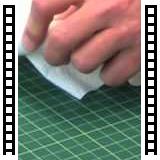 | Glue Model Rocket Tubes Together (2011-06-03)      This video shows how to glue two tubes together in order to make a longer model rocket. While the technique seems easy, it is also easy to screw it up and make an ugly looking rocket that needs a lot of extra sanding to get a good paint finish.
|
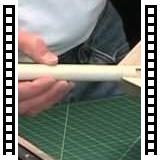 | Helicopter Model Rockets (2011-06-24)      This video gives you an introduction to the fascinating world of helicopter-recovery rockets. There are many different types of helicopters, and I'll show you a few of the different ones that I've come across in my journeys in rocketry If you asked me what is my favorite kind of rocket, I'd say it was the helicopters because they go fast like a rocket, but then they magically transform at apogee into something that operates completely different from a rocket. When the blades deploy, the rocket starts spinning down in a slow manner for a safe descent so that the rocket can be flown again and again. There is something unique about autogyro rockets, as they are technically known as, that makes spectators squeal with delight.
|
 | High Power Rocket - Black Brant Launch (2011-06-24)      This video shows the launch of the 4-inch diameter Black Brant II rocket kit. The rocket is available from Apogee Components web site.
|
 | High Power Rocketry Reload Adapter System (2011-06-03)      The Aerotech reload adapter system allows you to use just two motor cases to fly the six different sizes of propellant packs. That saves you money because you don't have to buy six different sizes of rocket motor cases. This video shows you how to use the RMS reload adapter system as you assemble a reload motor.
|
 | High-Power_launch_pad.mov (2011-05-29)      Looking for a real high power launch pad that can take "BIG" rockets? The "Gun Turret" launch pad from Apogee Components (www.ApogeeRockets.com) is something you might consider. It is made here in the USA from genuine steel, welded so that it will stay together under the weight and thrust of those powerful rocket motors. And while we do on encourage the use of it as a step stool, it is so strong, you can stand on it. If you're local club does not have a rail launch pad for high power rockets, this is one you might consider getting.
|
 | How Altitude Is Measured for Model Rockets, Airplanes and kites tutorial (2011-06-03)      Electronic altimeters are devices that measure the barometric pressure of air surrounding the flying vehicle. This video explains how they work to sense the air pressure and how accurate they are in real life.
|
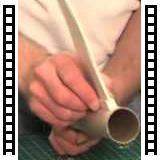 | How to make conformal model rocket parts (2011-06-26)      When the bottom edge of a model rocket part conforms to the shape of the curved body tube, we call this a conformal part. This includes wide parts, like thick fins, surface details like electrical tunnel covers, or simulated cockpits. The reason to make conformal parts is that they are much stronger, lighter, and they look better because there are not unsightly gaps under the edges. This video shows you how simple it is to make conformal parts. Basically, all you need is some sandpaper, and a body tube.
|
 | How to Select Rocket Motors - Part 1 of 2 (2011-10-05)      This video will walk you through the step-by-step procedure of picking rocket motors for your rocket kits. The basic process is to deselect motors that will not work, leaving you a big batch of rocket motors that will fly the rocket safely and successfully.
|
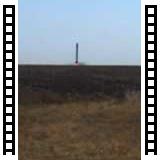 | How to Select Rocket Motors Part 2 (2011-06-24)      Picking rocket motors for model rocket launches is a step-by-step process where you will end up with more than one motors that works well with your model rocket. We'll finish up the sequence in this video.
|
 | How To Teach Model Rocketry - Part 1 (2011-06-27)      Teaching model rocketry doesn't have to be scary. You only need to cover the basics to be successful, as rocketry by itself will excite your students. In this video, we are teaching the basics by helping the students design a rocket for a specific mission. In this case, it is a drag race rocket.
|
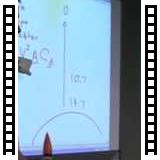 | How To Teach Model Rocketry - Part 2 (2011-06-27)      Teaching model rocketry doesn't have to be scary. You only need to cover the basics to be successful, as rocketry by itself will excite your students. In this video, we are teaching the basics by helping the students design a rocket for a specific mission. In this case, it is a drag race rocket. In this video, we'll see how drag force affects the altitude of a rocket.
|
 | Installing a Copperhead Igniter (2011-06-22)      How to install an Aerotech Copperhead igniter.
|
 | Introduction to High Power Rocket Level 1 Certification (2011-06-22)      \So you're thinking about getting your High-Power Level 1 Certification? Excellent. There are many good reasons to get it, besides it being a lot of fun. In this week's video, I'll go over some of the most frequently asked questions that we receive from flyers as they come to us for advice on which kit to get. I'm sure this information will be useful to you if you already have a Level 1 certification, because you'll be able to pass it on to those you mentor.
|
 | Marketing Model Rocketry (2011-06-22)      \What do sales training conferences have to do with model rocketry? In this video, I'll show you what I've been learning how the two relate.
|
 | Mid-Power Rocket - Black Brant Launch (2011-06-03)      The 2.6-inch diameter scale model rocket provides a great introduction to high-power rocketry.
|
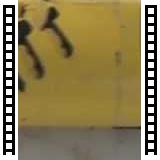 | Minimimum Diameter Retainers for High-Power Rockets (2012-03-09)      www.apogeerockets.com How do you hold reload casings in rockets that are just barely big enough for the motor itself? The answer is a product called a "minimum diameter retainer". In this video, you'll see how to install and use one for either the Aerotech or the Cesaroni model rocket motors.
|
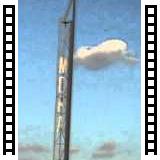 | Model Rocket Alititude Tracker (2011-08-30)      ow to track a model rocket to find out how high it flew. This video will show you how to optically track a rocket's flight, and how to figure out from angular measurement the peak altitude. It is a great activity for school students, as it gives them something to do while the other students are flying their own model rockets. The technical name for the altitude tracking device is called an inclinometer. The chart we use to determine the height from the angular measurement is called the altitude nomograph.
|
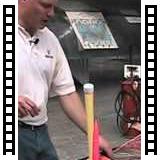 | Model Rocket Contest Questions Answered (2011-07-04)      Model Rocket Contest questions and answers
|
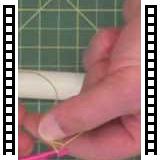 | Model Rocket Deployment Shock Cords (2011-06-27)      You can prevent your model rocket's shock cord from becoming tangled by crocheting the cord. This makes it shorter in length so it doesn't zipper the cord. But it still deploys easily, and extends to the full length.
|
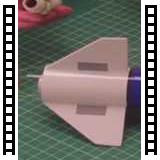 | Model Rocket Motor Mount Adapter Construction (2011-06-03)      This video will show you how to make an adapter so you can use small 18mm motors in a rocket kit that was designed for 24mm motors. This works with kits from Estes that have engine hooks already installed in them.
|
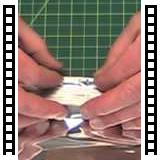 | Model Rocket Streamer Folding Part 1 of 2 (2011-06-24)      Folding a streamer creates more aerodynamic drag than a typical rolled up streamer. This allows the rocket to fall slower to the ground. It is used most often in competition style model rockets. It can also be used in the Team America Rocketry Challenge (TARC) contest where you have to have your egg capsule come down separately. In part one, you'll see how to fold the streamer accordion style. In part two, you'll see how to attach it to your model rocket.
|
 | Model Rocket Streamer Folding Part 2 (2011-06-24)      In part 1, you learned how to fold the streamer recovery device. In this video, you'll now learn how to attach the streamer to the model rocket so that it is firmly attached. You'll also see the technique on how to get it into a very small tube.
|
 | Model Rocket with Strap-on Boosters (2011-06-22)      This video shows what you can do with the Booster Vision Gear-Cam HD video camera. I mounted it on the top of a model rocket with strap-on boosters. You can see the boosters fall away and land on the ground. Come to the Apogee Components web site and see the flight footage in FULL High-Definition. Watch it in slow motion, and see how clear the image is. It is like you were on the rocket for the flight yourself. This particular rocket I built as an example of how to make strap-on rockets (called parallel staging), for my book "Model Rocket Design and Construction." See pages 252 through 256 on how the rocket was set up. This is not a kit rocket that can be purchased. It was built using some custom-made components that are described in the book. The book is available from Apogee Components at: www.ApogeeRockets.com
|
 | Model Rocketry in the Classroom (2011-05-31)      Teaching model rocketry in a classroom is a lot of fun because the students are locked on and are very attentive. They can't but help learn, because rocketry is so much fun. Here you'll see how to take rocketry and apply it to what you're studying in your classroom.
|
 | Nike-Smoke Model Rocket Launch (2011-06-03)      |
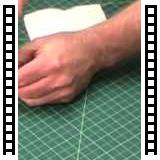 | Reload Motor Assembly (2011-06-20)      Assembling a reloadable rocket motor from Aerotech. As you'll see in this video, it isn't hard to put together a reloadable motor. So if you've had some apprehension, then you'll find this rocketry video helpful.
|
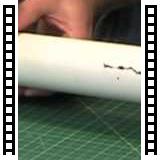 | Repairing Zippered Model Rocket Tubes (2012-09-24)      How to repair a zippered body tube after a model rocket flight. The technique for repairing a tube is to simply cut off the damaged section, and splice in a new piece. Here you'll see how to trim off the damaged part, and add the tube coupler to tie the new section to the old rocket.
|
 | Rocket Launch of the LOC Nuke Pro Maxx (2011-06-22)      This model rocket is the Loc Nuke Pro Maxx kit. It is being flown on a Cesaroni G55 rocket engine.
|
 | RockSim Software Tutorials - 1. Getting Started (2011-06-15)      Get Started by opening an existing design & run a simple simulation
|
 | RockSim Software Tutorials - 2. Flight Profile (2011-07-04)      www.ApogeeRockets.com - Flight Profile 1 See what the flight will look like
|
 | Science Fair Model Rocket (2011-06-26)      Apogee Components offers you a look at a great science fair project using model rockets. Which nose cone shape works the best.
|
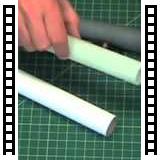 | Selecting Rocket Engine Retainers (2011-06-03)      How do you pick the right motor retainer for your high power model rocket? The process is straight-forward.
|
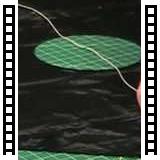 | Strengthen Plastic Parachutes for Model Rockets (2011-05-29)      This video shows how to take a plastic parachute and turn it into a super tough chute that can be used on heavier rockets. You'll save money using this technique. It even shows how to do it if the chute has a spill hole in it so that it descends faster. For more rocketry information, see www.ApogeeRockets.com
|
 | TeleMetrum: GPS Tracking for High Power Rockets (2011-06-25)      Part 1 of 3: This will give you an general overview of the TeleMetrum payload for high-power rocket. It transmits the GPS location of the rocket along with all the flight data (acceleration, position, speed, and state) of the rocket to your computer on the ground. You can then plot out the data to analyze your rocket's flight.
|
 | TeleMetrum: GPS Tracking for High Power Rockets Part 2 of 3 (2011-07-04)      Part 2 of 3: When your rocket carrying the TeleMetrum takes off, it will transmit back to you a lot of flight data. The software will download this data to your computer and display key components for you to see in real-time. This video shows an overview of the things you'll see on your computer and hear over the speakers.
|
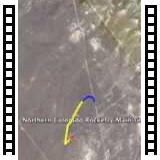 | TeleMetrum: GPS Tracking for High Power Rockets Part 3 of 3 (2011-06-27)      The GPS payload for high power rockets, the TeleMetrum, transmits a lot of data back down to the ground. What can you do with it? For one thing, you can export out a KML file that can be opened in Google Earth. Here you'll see how the file looks and what data you can extract from it.
|
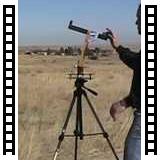 | Tracking A Model Rocket's Altitude (2011-06-03)      This video shows how to use a tracking scope that is needed to measure the height that a model rocket flew into the sky. It also shows how to use tracking powder so that you can mark the location in the sky where the rocket flew too. For more information on model rockets, visit: www.ApogeeRockets.com
|
 | Transformers: Rockets that Change Shape in Flight (2011-06-03)      www.ApogeeRockets.com Changing a rocket's shape in flight is challenging because you need some sort of triggering device to start the transformation process. In this video you'll see two ways to initiate the conversion the sliding piston, and the burn thread.
|
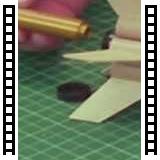 | Using 18mm Retainers in Model Rockets (2011-06-26)      The 18mm Engine Retainers were designed to be used with the Aerotech 18mm reloadable rocket engines, not the standard single-use motors (from Estes, Quest, Apogee, or Aerotech). But there is some good news! With a little bit of tape, you can use the retainers with 18mm single-use motors too. This video will show you how to add the tape in the right spot so that you can use single-use motors with the 18mm engine retainers.
|
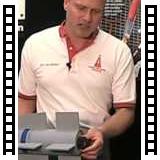 | Using 29 to 38mm motor adapters in High Power model rockets (2011-06-17)      29mm motor mount adapters for 38mm kits are deceptively simple looking. "How do you use them?" is a common question people ask. This video will show you a few simple techniques. More how-to videos are at: www.ApogeeRockets.com
|
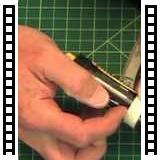 | Using Short Motor In Aerotech Rocket Kits (2011-05-29)      www.apogeerockets.com This video will show you how to put a shorter motor into the Aerotech rocket kits. The kits were designed for longer motors, but with a strip of tape, you can installer shorter motors
|
 | Using the FlashPak Launch Controller (2012-03-24)      The FlashPak controller is a big hit with customers. But there are many questions that we've received about the device. The biggest question we received is: "will it ignite a composite motor?" Obviously, the answer is no. There is NO controller that will ignite a composite propellant rocket motor. The purpose of the controller is to fire off "igniters." It is the igniter that then fires off the composite propellant in the motor. The controller never goes directly to the propellant. But "wrong question" aside, in this video I'll answer some of the right questions, such as: "will it ignite a copperhead igniter?"
|























































































































































































































































































































































































































































































































































